Tradition
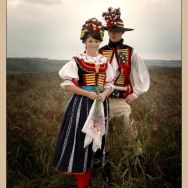
CEREMONIAL FOLK COSTUME OF HANACKE SLOVACKO
Hustopece Town was located at a boundary of three ethnographic regions till the year 1945 – Hanacke Slovacko, South Brno Region and an area of German South-Moravians, so-called Thayner (Dyjaks).
Hanacke Slovacko was the most famous region known from activities of popular writers and collectors as for example Jan Herben, Augusta Sebestova, Hynek Bim, Jakub Vrbas and especially brothers Alois and Vilem Mrstik, who situated their novel chronicle Year in a Village and stage play Marysa to this region.Vilem Mrstik was so fascinated by the folk costumes from Hanacke Slovacko that even actors from National Theatre in Praha wore these folk costumes during the stage play Marysa premiere. The costumes were bought by the writer during his stay in Divaky.
You can see the ceremonial folk costume from Hanacke Slovacko from the period of its top stage, it means from the years 1830 – 1850, on the photographs on display. Deep and dark colours were typical for the costumes during that period as well as original styled embroidery and unified form (tape) from Hustopece region via Kloboucko up to Zdanicko.
As in case of other folk costumes, military uniforms had the most important influence on local costumes – we need to mention especially hussar waistcoats and overcoats called dolmans that had very rich braid and button decorations. The distinct braiding was typical also for female folk costume.
Ceremonial trousers were made from leather (mainly from deerskin) and they had embroidery decoration of side seams, crotch, fly and belts.
Woollen cloth waistcoat (cordula) with a high collar was also decorated by embroidery (in addition to braids), for which various colours were used as in case of trousers. Ceremonial handkerchief was attached to the top button hole of the waistcoat.
The shirt had wide sleeves and it was laced up at the neck and collar. Shirt collar was not bent and people wore it along the neck – necessary black neck cloth was wrapped round it.
Hat was very wide and it was slightly curved in the front. It was richly decorated with beads, chenille, ribbons, etc. It was also decorated by „vonice“ with three tips in case of single men. Also the waistcoat was decorated by vonice (one-tip) with a red ribbon.
Men in all regions wore blue hoses and high shoes – preferably made-to-measure shoes with small heel and straight side.
Female folk costume contained richly decorated waistcoat called kordulka. The most prestigious waistcoat was made from woollen cloth. Braids and ribbons were the main decorative elements (horizontal ribbon and vertical ribbon).
Linen sleeves were also decorated by embroidery – mainly in the line of collar, shoulder seam and tackle. Tiers were made from red ribbon.
Female silhouette was slim (maximum one underskirt). Material and colour of upper skirt were not identical with the kordulka material. Apron was very wide – it consisted of two strips (connected by so-called stinek) – and it was inserted into an Empire style collar, below which a wide ribbon was tied up from the rear side. Aprons made by method of sewn batik were the most popular.
Chaplet was very rich and it was attached to head at the rear side by red ribbons. Shoes with buckles were complemented by red colour stockings.
Ceremonial handkerchiefs were very big as in case of men (about 65cm x 65cm and more).
Photographs: Dagmar Humpolikova
Folk costume restoration and text: Town museum and gallery Hustopece.
Contact
Hotel Vinopa
Herbenova 527/5
693 01 Hustopece
Czech Republic
| Email: | info@hotelvinopa.cz |
|---|---|
| Tel.: | +420 519 323 480 |
| Mobile: | +420 603 586 908 |
| Fax: | +420 519 323 480 |
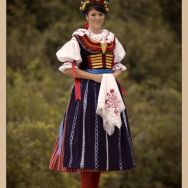
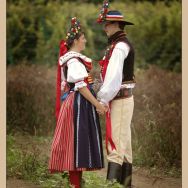
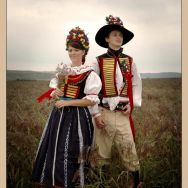
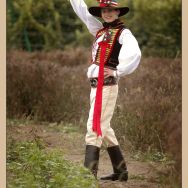
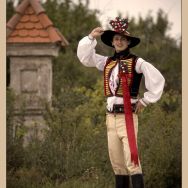
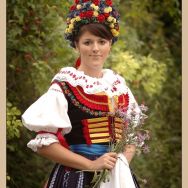
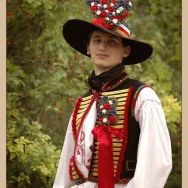
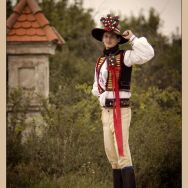
 hotelvinopa.cz
hotelvinopa.cz